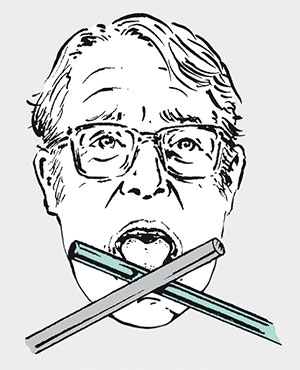5.1.2 Alessandro Volta (1745–1827)
Volta, a compatriot of Galvani, was also interested in the study of electricity. He read Galvani's account of a range of careful experiments, attributing the twitching of the frogs' legs to the drawing of electricity from the nerve–muscle system. Volta, in the best tradition of science, reserved his judgement pending further, independent, investigations. He fixed his attention particularly on the fact that the connection to the nerve necessarily involved two different metals being in contact. Volta must have been aware of contemporary curiosity about the peculiar things that happen when different metals are joined together. Figure 79 shows the sort of experiment Volta's contemporaries were carrying out – an unpleasant taste can be detected when the tongue is touched to the junction of two crossed rods of different metals. Volta went further. He placed a silver coin on his tongue and then inserted a strip of tin foil into his mouth – a sour taste sensation correlated exactly with the foil touching tongue and coin simultaneously. Some interaction was evidently taking place between the two metals in his mouth. So Volta rejected Galvani's physiological description of the cause of the twitching frogs' legs. Instead he set about seeking a purely inorganic, chemical explanation, based on the contact of different metals.

